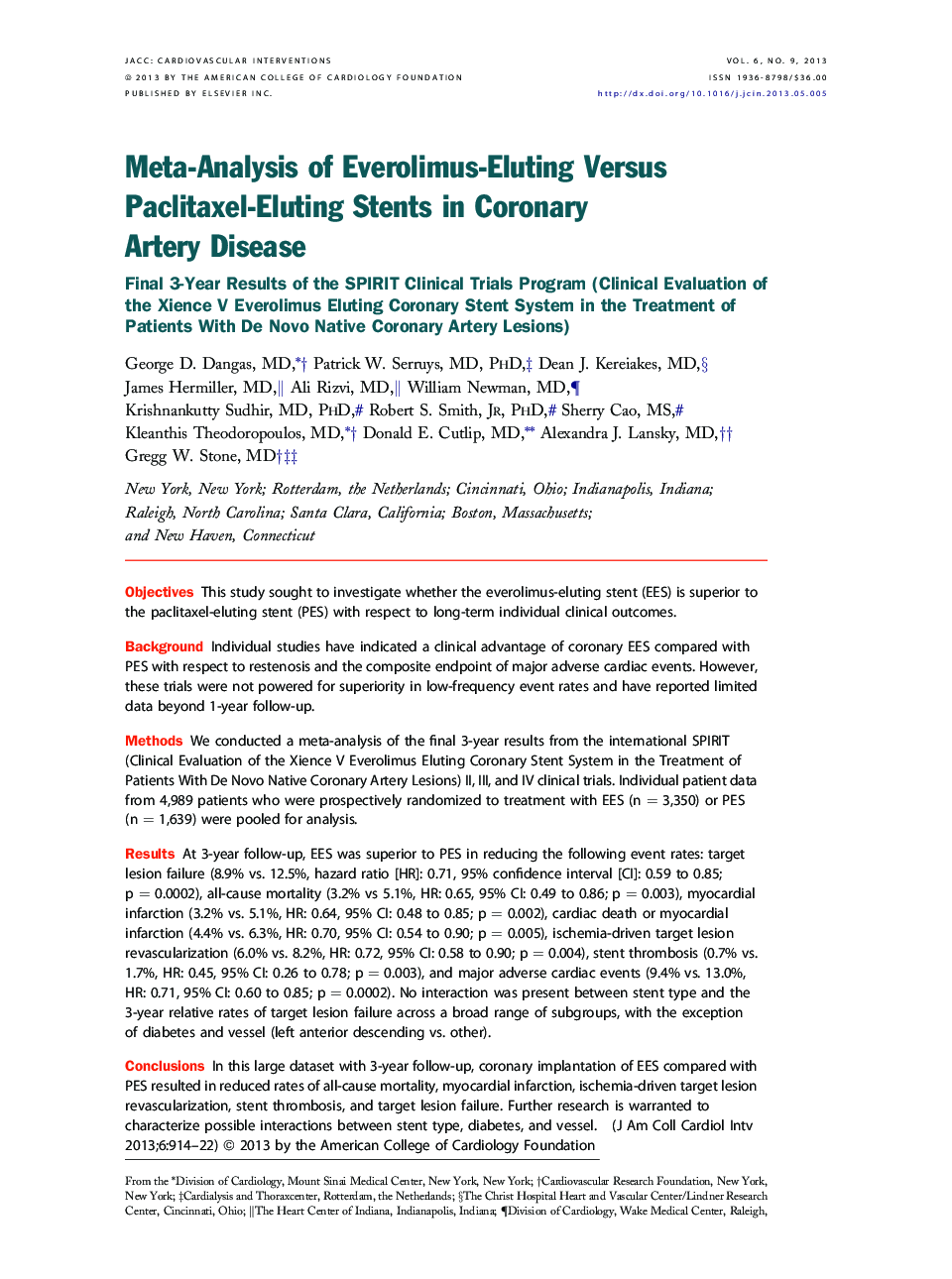| کد مقاله | کد نشریه | سال انتشار | مقاله انگلیسی | نسخه تمام متن |
|---|---|---|---|---|
| 2940557 | 1177037 | 2013 | 9 صفحه PDF | دانلود رایگان |

ObjectivesThis study sought to investigate whether the everolimus-eluting stent (EES) is superior to the paclitaxel-eluting stent (PES) with respect to long-term individual clinical outcomes.BackgroundIndividual studies have indicated a clinical advantage of coronary EES compared with PES with respect to restenosis and the composite endpoint of major adverse cardiac events. However, these trials were not powered for superiority in low-frequency event rates and have reported limited data beyond 1-year follow-up.MethodsWe conducted a meta-analysis of the final 3-year results from the international SPIRIT (Clinical Evaluation of the Xience V Everolimus Eluting Coronary Stent System in the Treatment of Patients With De Novo Native Coronary Artery Lesions) II, III, and IV clinical trials. Individual patient data from 4,989 patients who were prospectively randomized to treatment with EES (n = 3,350) or PES (n = 1,639) were pooled for analysis.ResultsAt 3-year follow-up, EES was superior to PES in reducing the following event rates: target lesion failure (8.9% vs. 12.5%, hazard ratio [HR]: 0.71, 95% confidence interval [CI]: 0.59 to 0.85; p = 0.0002), all-cause mortality (3.2% vs 5.1%, HR: 0.65, 95% CI: 0.49 to 0.86; p = 0.003), myocardial infarction (3.2% vs. 5.1%, HR: 0.64, 95% CI: 0.48 to 0.85; p = 0.002), cardiac death or myocardial infarction (4.4% vs. 6.3%, HR: 0.70, 95% CI: 0.54 to 0.90; p = 0.005), ischemia-driven target lesion revascularization (6.0% vs. 8.2%, HR: 0.72, 95% CI: 0.58 to 0.90; p = 0.004), stent thrombosis (0.7% vs. 1.7%, HR: 0.45, 95% CI: 0.26 to 0.78; p = 0.003), and major adverse cardiac events (9.4% vs. 13.0%, HR: 0.71, 95% CI: 0.60 to 0.85; p = 0.0002). No interaction was present between stent type and the 3-year relative rates of target lesion failure across a broad range of subgroups, with the exception of diabetes and vessel (left anterior descending vs. other).ConclusionsIn this large dataset with 3-year follow-up, coronary implantation of EES compared with PES resulted in reduced rates of all-cause mortality, myocardial infarction, ischemia-driven target lesion revascularization, stent thrombosis, and target lesion failure. Further research is warranted to characterize possible interactions between stent type, diabetes, and vessel.
Journal: JACC: Cardiovascular Interventions - Volume 6, Issue 9, September 2013, Pages 914–922